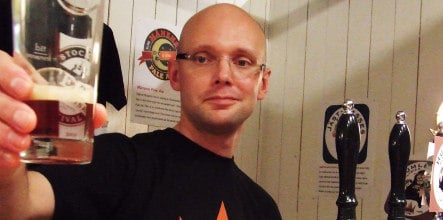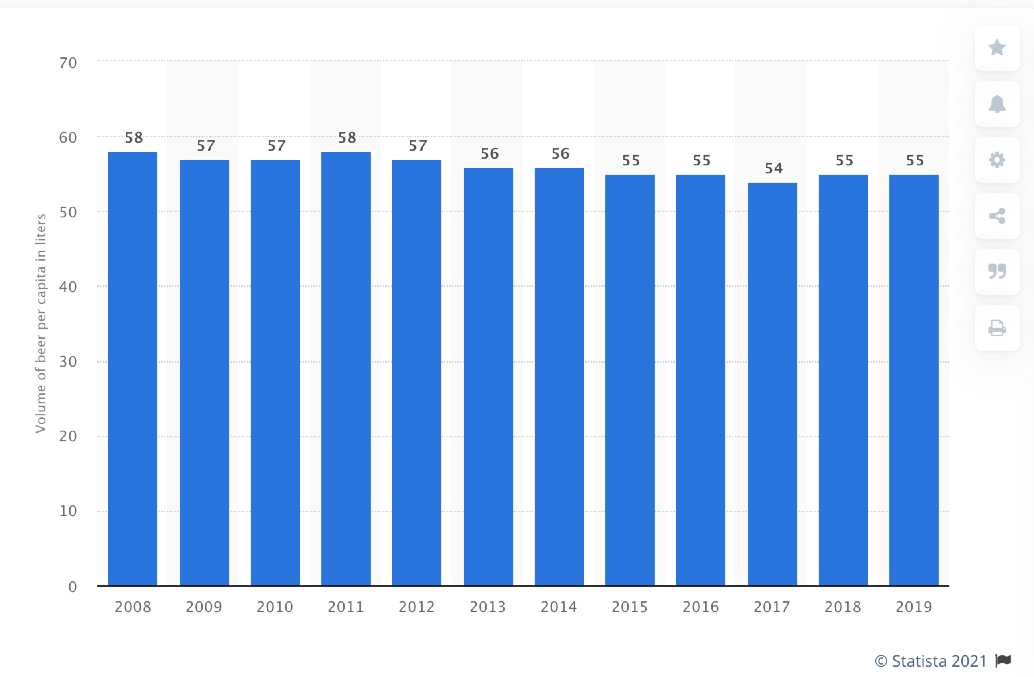Housed in the beautifully renovated Nacka Strand Factory, the Stockholm Beer and Whisky Festival is expecting its largest turnout so far in its sixteen year history:
“It’s our biggest ever. This year we have over 15,000 different whiskies and beers on display and are expecting between 23,000 and 25,000 visitors over the two weekends” said project manager Marianne Wallberg.
On entering the exhibition, visitors receive a rather lovely souvenir pint glass from which beer tastings can be supped. Once inside, it is surprising how large the venue is. A bustling indoor space, where banners, posters and stalls all jostle for attention. The whole atmosphere is complemented by live music and several food vendors, from English Fish and Chips to an Aussie barbecue.
Once the initial disorientation had subsided, the first port of call was Sigtuna Brygghus. The stall represents one member of Sweden’s burgeoning micro distillery movement. Located near Valtsa 7km from Arlanda Airport, north west of Stockholm, Sigtuna Brygghus produces a mere 4,000 litres of beer per month.
Sigtuna has 8 different types of beer on the menu so far and is one of the only micro breweries in Sweden focusing on German style beer. Manning the stall was Mattias, who explained how the brewery is “trying to keep the tradition alive”.
Of their more unusual brews, mead must be the winner. Packing a whopping 10 percent alcohol content, the mead sampled was very light in colour with a distinct but in no way unpleasant taste. “It’s a great substitute for Champagne”, says Mattias. “I always bring it out for New Year”.
Next up was Slottskällans Bryggeri where, surprisingly for such a male dominated industry, one of the experts was a young woman. When asked why she decided to get involved in the brewing industry, Charlotte replied: “I like beer”.
Working her way up from humble beginnings as a bar tender at her Student Union boozer at Uppsala University, Charlotte states that she got involved with Slottskällans because she “wanted to show people that there is more out there than just simple lager”.
Recommended by Charlotte herself, the deceptively easy-drinking Imperial Stout was the next to be tried. Despite a 9 percent ABV and a full-bodied taste, it is a very palatable tipple with hints of chocolate and coffee.
Founded in 2003, Oppigårds Bryggeri is another new contender in the micro brewery game. In-house expert Ulf Beijner suggested a sample of the Late Summer Ale, a surprising drink with a delicious fruity taste, most notably of grapefruit.
Also up for appraisal from Oppigårds was their Starkporter; a dark, sweet beer with a strong taste of coffee and chocolate, and the fantastically drinkable Golden Ale.
In addition to beer, the festival hosts many varieties of whisky. Opened in 1999 but not fully commercially functional until 2002, Mackmyra was Sweden’s first whisky distillery.
The question of why set up a distillery in Sweden comes to mind, considering the popularity of Scottish whiskies? A question to which Mackmyra spokesman Christian Ingerhed retorts: “Why not?!”.
Although still a small enterprise with only 28 staff, Mackmyra Whisky is making a big impact within the industry.
“There’s a great market for whisky in Sweden, there’s a lot of interest in it, especially malts”, explains Ingerhed: “We wish we could produce more, but since we started up so recently, we are just waiting for the whiskies to mature”.
Mackmyra is a distillery with a big vision, with plans to take Swedish whisky to the international market. “We have 30,000 bottles ready and labelled for overseas buyers” said Ingerhead. And with allthe ingredients 100 percent Swedish, Mackmyra is confident it will be a hit.
Swedish produce was not the only fare on offer at the festival, with American beer well represented. Bob Pease, vice president of the Brewers Association comes annually to the event in order to highlight American craft beer.
Pease aims to bring the success of craft beer in the US to Sweden by promoting the export of American beers to Scandinavia. With over 40 breweries participating in the Export Development Programme, it is proving popular.
“We have found that demographically, Swedish beer consumers are educated and usually with some disposable income”, said Pease. “They are interested in, and willing to, pay for something better. We want to raise the profile of speciality beer in Sweden”.
In particular this year, Pease wants to focus on combining beer and food: “Beer actually goes better with food than wine, it’s just that wine has the moral high ground”.
Cheese is a great first choice for those wanting to experiment mixing beer with food, but sweets and desserts can also offer delicious partnerships.
There are a myriad different beer types and tastes and the best way to learn about coordinating food and beer is to experiment. But for those who would a little guidance, or just some inspiration, then have a look at the Brewers Association’s beer and food matching chart
.
Moving on from the booze, Scottish expat Anne Dunlop, originally harking from just outside Glasgow, was presenting her series of delicious whisky-inspired fudge. Ranging in taste from Laphroaig to Lagavulin, the homemade treats are a real delight. Fudge is also a great accompaniment to beer. Try with a full flavoured, sweeter beer, such as stout.
The Stockholm Beer and Whisky Festival was a thoroughly enjoyable and interesting experience, and is sure to blow away any lurking misconceptions or prejudices against the humble pint. The festival is running from the 25-27th September and is well worth a visit.




 Please whitelist us to continue reading.
Please whitelist us to continue reading.